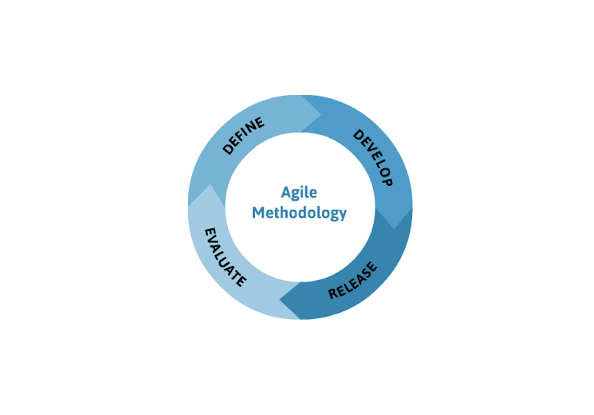A recent study conducted by the Project Management Institute has shown that only 64% of government strategic initiatives meet their goals and business intent. Working on government projects can be a great challenge that brings in extra responsibility, time-management skills and strategic methodology.
This article aims to share some key points and best practices that should always be kept in mind in order to surpass the main challenges that such huge projects entail.
1. Complexity

As we know, governments are massive and complex, and their project are as large as the organization itself.
What they usually indulge in is building airports, bridges, subway systems or underground highways which are megaprojects that bring enormous costs.
Managing such projects is an extremely responsible task because the bigger the project – the more likely it is to fail because there is plenty of room for mistakes to be done or deadlines to be missed.
Statistically speaking, it is not a surprise that a larger part of government projects has failed due to their complexity, tons of regulations and high risks.
All these elements make them a very demanding and time-consuming projects that not everyone is willing to accept.
In fact, many companies have witnessed a downfall in their stock just because the market is aware that their projects are prone to fail.
What we should understand, however, is that the implementation of such projects is beneficial both for the governments and our societies, but the private sector is rarely enthusiastic about such projects (since they often fail).
For that reason, what is left to governments is to take the risk and try to successfully implement their projects.
What can be done about it?
One possible solution is to break the project into smaller ones.
This will decrease the risk that usually goes hand in hand with large projects.
It will also make the project less complex and easier to navigate and organize.
Another solutions is to develop a foundation by having all involved parties as active participants: not only the government as the client but also the stakeholders, organizations, and the community that will benefit from this project and, ultimately, the company that has undertook the implementation of the project.
Accordingly, you should develop a project plan with timelines for the crucial elements and critical points in the project.
It is important to have criteria with which you will measure your success rate, the approvals for certain installations, equipment and industrial regulations as well as the product functionality at the very end, right before the product gets launched.
By integrating all these elements together you lower the risks that something might go wrong.
Last but not least, it is important to reflect.
In large projects, it is crucial to reflect on everything that has been done so far after the completion of any phase of the project.
Did the team delivered the task within the time limit?
Was the allocated budget sufficient for this part of the project?
What can be done differently and more effectively in the next phase?
All these checkpoints can save you unnecessary delays and critical points because we all know that everything can be done (or delivered) better the next time it is done.
2. Strong leadership
Strong leadership is one of the key components of a successful (government or any other) project delivery.
Even though the government does not treat its employees as generously as the private sector does, they can still provide great opportunities for career development of developers, executives, entrepreneurs or any other profiles that take part in their projects.
Establishing new positions is a great way to build a strong relationship between the company and the client (in this case, the government) and also for the community wellbeing itself.
People are satisfied when they know that their efforts can be expanded and implemented.
A lack of good leadership structure may cost governments whole projects. It is hard to balance everyone’s expectations and reach a consensus in which all parties will be satisfied with the outcome – and this is the key perspective in all large projects.
A solution?
It is the leaders’ part to produce clear instructions that will not leave room for misunderstandings. They have to make sure that everyone working on the project knows what their part is and what is expected of them in the end.
Thus, a clear hierarchical structure should be established and everyone should be well acquainted with it.
Identification of an adequate project leader is relevant. People work either in teams or individually but, nevertheless, the team should have a team leader that will be a mentor and motivate the others. It is his or her responsibility to share enthusiasm and positive energy, and serve as a mediator between the other teams. A leader’s profile should consist of excellent communication skills, exceptional (time) management, leadership skill and emotional intelligence. A successful project delivery largely depends on his (or her) accountability as well as a great teamwork. Maybe most important is for the leader to believe in the project himself/herself, so that they can give most of them in turning it into reality.
3. Teamwork

As I mentioned above, collaborative atmosphere and collaborative behavior are a must in megaprojects. A good team is as important as a good leader.
Companies should spend as much time in building the right team as they spend in finding the great leader.
An effective team should be highly motivated, flexible, disciplined and open to new challenges.
The team members’ skills and talents should be followed with instructions on tasks which they are best suitable for.
The most important constituent of a successful team is open communication. This applies not only to the communication between team members, but also to the one between teams and stakeholders, companies and clients. Here is where the team leader’s role comes to the fore as well, as he/she is the mediator between all sides involved.
Timely feedback is another element that every team needs – for they should know if they are on the right track. As Ken Blanchard has said: “Feedback is the breakfast of champions.” Moreover, if leaders invest in creating an atmosphere in which everyone can share their opinion or ideas without fear of being judged or victimized – the team will grow into a compact community of trust and collaboration that would have a large positive impact on the successful delivery of the project.
4. Stakeholders
Formal processes which are typical of government projects make the management of all stakeholders extremely challenging. Since all government projects are megaprojects, they last long and this implies long-term operations with stakeholders that continue for years and, as such, entail changes in costs and scope.
Due to their complex structure, even the smallest government projects have multiple stakeholders in different agencies. If we add administrative and bureaucratic documentation to all of this, the whole project becomes over-burdened, the communication slow, and the teams not as effective as they might be if they would not await for some documentation processes to be completed.
Yes, documentation is vital to any project, but it is important not to create unnecessary documentation because they drag down the whole process. When preparing the administrative part of the project, have in mind that it should be parallel to the methodology used in the project. As for the stakeholders, their structure should be kept as close-knit as possible but, at the same time, flexibility should be shown – for they all have different priorities, concerns and expectations form the project. This leads me to the fifth important element:
5. Agile methodology

No matter how much we invest in people in a project, it is the other – the methodology side (or our strategy) that should also be equally sophisticated in order to bridge with your people into a successfully delivered project. The agile methodology has been drastically on the rise during the last decades, and on first sight, it looks as if it is not very compatible with the rigid hierarchy and slow decision-making that government projects have.
Agile projects are flexible and quick in decision-making – which means that there is a regular communication between all team members and leaders. This makes the hierarchical boundaries between leaders and team-members more blurred and communication is fluid and less stressful.
To achieve this kind of flexibility and quickness, the managers need to have full control over the project. Here comes the important role of a software that would enable this neat bird-perspective over the project.
One such is ScheduleReader, a viewer for Oracle’s Primavera P6 XER project files. What makes it valuable are the viewing functions like time-location chart, progress update features, high engagement, up-to-date resources and time-saving functionalities. It is a perfect match for large enterprise or government projects – projects that require higher control, clear overview (due to its largeness and details), regular feedback and a personalized view. All these characteristics make this software a great solution for mega- and government projects. In this way, it will be much easier to make government projects more agile, hence more dynamic and progressive.
6. Over-optimism
One of the factors that influence whether a project will be successfully delivered or not is over-optimism. It is important not to mix over-optimism with enthusiasm. What often happens is companies setting up short deadlines (due to their enthusiasm or without realistic estimations) in order to impress the client. The estimated dates are set without consideration of all the factors that influence them and this has lead dozens of projects into failure.
Governments tend to be optimistic about all their projects and plans – and especially optimistic about the time needed to implement them as well as the team’s ability to keep pace with their enthusiasm.
What can be done about that?
One solution is to set realistic goals. Be aware of your capabilities because pushing your limits can either turn out to be an extremely good or bad decision. In this way, you will not be under constant pressure that you have to make short and fast deliveries of certain phases of a project. This also applies to stakeholders who tend to make assumptions about the progress of teams over which they have no control.
Another possible solution is to become more transparent. This should particularly be the case for governments, and all their effort to become more transparent are a positive sign for every society. Such efforts should also be dome to the IT personnel that is employed in all government agencies; and this should be rewarded and appreciated. Also, regularly delivering reports about the progress may also improve the performance as everyone knows exactly at what point in the project they are. By being transparent and realistic, we will never over-estimate our abilities and over-optimism will not become an obstacle to our success.
7. Use of Digital Technologies

Using innovative approaches is the only way to keep pace with the ever-changing technological society. Needless to say how much time the latest digital technologies have saved in analyzing and processing data. However, most government IT systems have been developed decades ago and have not been upgraded since them. With time, this becomes a bigger burden for maintenance and it gets more and more expensive as well.
Believe it or not, 70% of government’s IT budget is spent on legacy systems maintenance – some of which still run on programming languages that were developed decades ago (e.g. COBOL from 1959).
Implementing more efficient and less expensive latest IT solutions is not that simple, especially for governments, since these solutions are not compatible with legacy systems and tons of data could be irreversibly lost. The private sectors, on the other hand, can make this conversion far more easily since they are smaller and much more flexible organizations and (usually) have less confidential information.
Being able to implement a modern IT solution is a luxury that not everyone can afford. However, governments should be more consistent and try to implement new and latest technologies so that their performances would be more effective and time-saving.
In a nutshell
Having said all of the above, it is easy to conclude that governments’ mega-projects are a challenge for any company that has to implement them. As we saw, we are dealing with multi-faceted projects with many aspects that influence them – hence the higher probability of them ending up as failures. Still, this does not mean that companies should not give them a try because there will be many benefit both for them and for our societies if such project are successfully implemented.
